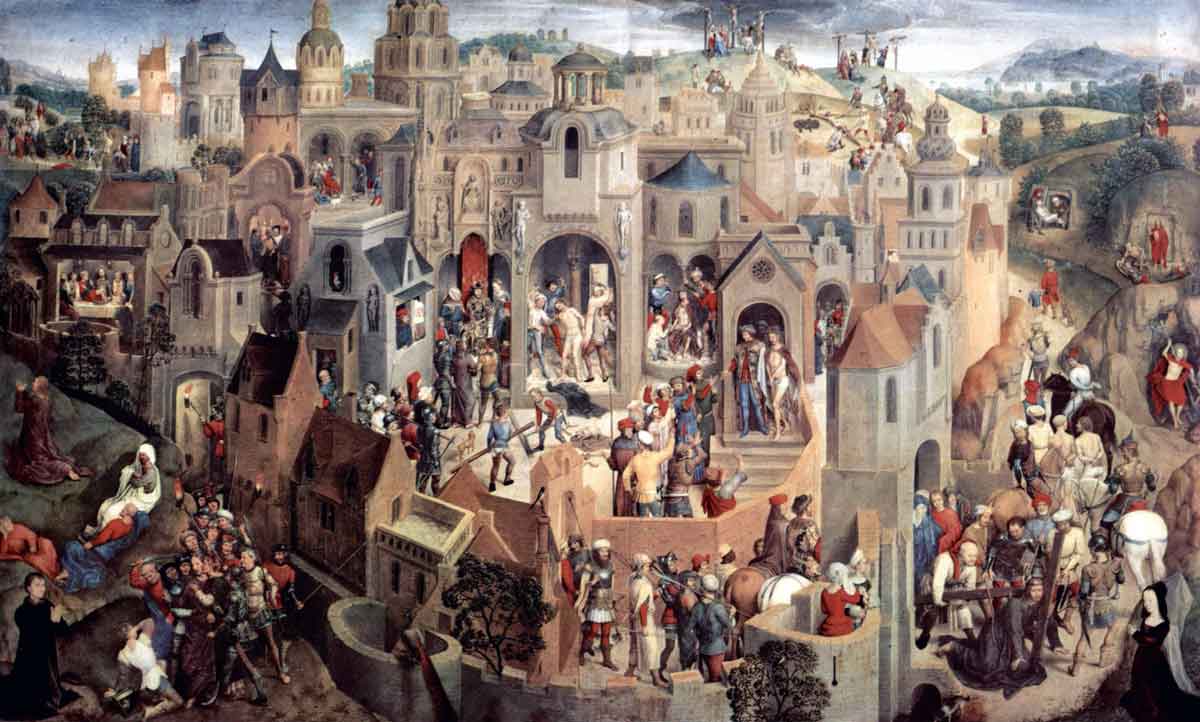MAY 27 – ST. MARY MAGDALEN OF PAZZI. & VENERABLE BEDE.
ST. MARY MAGDALEN of Pazzi, of an illustrious house in Florence, was born in the year 1566, and baptized by the name of Catherine. She received her first communion at ten years of age, and made a vow of virginity at twelve. She took great pleasure in carefully teaching the Christian doctrine to the ignorant. Her father, not knowing her vow, wished to give her in marriage, but she persuaded him to allow her to become a religious. It was more difficult to obtain her mother’s consent; but at last she gained it, and she was professed, being then eighteen years of age, in the Carmelite monastery of Santa Maria degli Angeli in Florence, May 17th, 1584. She changed her name Catherine into that of Mary Magdalen on becoming a nun, and took as her motto, “To suffer or die;” and her life henceforth was a life of penance for sins not her own, and of love of our Lord, who tried her in ways fearful and strange. She was obedient, observant of the rule, humble and mortified, and had a great reverence for the religious life. She loved poverty and suffering, and hungered after Communion. The day of Communion she called the day of love. The charity that burned in her heart led her in her youth to choose the house of the Carmelites, because the religious therein communicated every day. She rejoiced to see others communicate, even when she was not allowed to do so herself; and her love for her sisters grew when she saw them receive our Lord. God raised her to high states of prayer, and gave her rare gifts, enabling her to read the thoughts of her novices, and filling her with wisdom to direct them aright. She was twice chosen mistress of novices, and then made superioress, when God took her to Himself, May 25th, 1607. Her body is incorrupt.

REFLECTION: St. Mary Magdalen of Pazzi was so filled with the love of God that her sisters in the monastery observed it in her love of themselves, and called her “the Mother of Charity,” and “the Charity of the Monastery.”
VENERABLE BEDE.
VENERABLE BEDE, the illustrious ornament of the Anglo.
Saxon Church and the first English historian, was consecrated to God at the age of seven, and entrusted to the care of St. Benedict Biscop at Wearmouth. He became a monk in the sister-house of Jarrow, and there trained no less than six hundred scholars, whom his piety, learning, and sweet disposition had gathered round him. To the toils of teaching and the exact observance of his rule, he added long hours of private prayer, and the study of every branch of science and literature then known. He was familiar with Latin, Greek, and Hebrew. In the treatise which he compiled for his scholars, still extant, he threw together all that the world had then stored in history, chronology, physics, music, philosophy, poetry, arithmetic, and medicine. In his Ecclesiastical History, he has left us beautiful lives of Anglo-Saxon Saints and holy fathers, while his commentaries on the Holy Scriptures are still in use by the Church. It was to the study of the Divine Word that he devoted the whole energy of his soul, and at times his compunction was so overpowering that his voice would break with weeping, while the tears of his scholars mingled with his own. He had little aid from others, and during his later years suffered from constant illness; yet he worked and prayed up to his last hour.
The Saint was employed in translating the Gospel of St. John from the Greek up to the hour of his death, which took place on Ascension-day, A.D. 935. “He spent that day joyfully,” writes one of his scholars. And in the evening the boy who attended him said, “Dear master, there is yet one sentence unwritten.” He answered, “Write it quickly.” Presently the youth said, “Now it is written.” He replied, “Good! thou hast said the truth—consummatum est; take my head into thy hands, for it is very pleasant to me to sit facing my old praying-place, and there to call upon my Father.” And so on the floor of his cell he sang, “Glory be to the Father, Son, and Holy Ghost;” and just as he said, “Holy Ghost,” he breathed his last, and went to the realms above.
REFLECTION: “The more,” says the Imitation of Christ, “a man is united within himself and interiorly simple, so much the more and deeper things doth he understand without labor; for he receiveth the light of understanding from on high.”
WORD OF THE DAY
BRANCH THEORY. The position held by some Anglo-Catholics that the one true Church of Christ is made up of three separate churches, the Anglican, Roman Catholic, and Eastern Orthodox. It assumes that episcopal and priestly orders, validly transmitted, are found only in these three churches. While admitting that these bodies differ widely in many ways, the branch theory holds that they are united in essentials. They are out growths, it is said, from a single ecclesiastical trunk, the original Church founded by Christ.
Modern Catholic Dictionary, Fr. John Hardon SJ (Get the real one at Eternal Life — don’t accept an abridged or edited version of this masterpiece!)
This article, MAY 27 – ST. MARY MAGDALEN OF PAZZI. & VENERABLE BEDE. is a post from The Bellarmine Forum.
https://bellarmineforum.org/may-27-st-mary-magdalen-of-pazzi-venerable-bede/
Do not repost the entire article without written permission. Reasonable excerpts may be reposted so long as it is linked to this page.

